Related Research Articles

Poaceae or Gramineae is a large and nearly ubiquitous family of monocotyledonous flowering plants known as grasses. It includes the cereal grasses, bamboos and the grasses of natural grassland and species cultivated in lawns and pasture. The latter are commonly referred to collectively as grass.
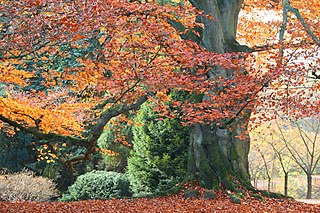
Beech (Fagus) is a genus of deciduous trees in the family Fagaceae, native to temperate Europe, Asia, and North America. Recent classifications recognize 10 to 13 species in two distinct subgenera, Engleriana and Fagus. The Engleriana subgenus is found only in East Asia, distinctive for their low branches, often made up of several major trunks with yellowish bark. The better known Fagus subgenus beeches are high-branching with tall, stout trunks and smooth silver-grey bark. The European beech is the most commonly cultivated.

European beech or common beech is a deciduous tree belonging to the beech family Fagaceae.

The jungle prinia is a small passerine bird, a warbler in the family Cisticolidae.

Myosotis is a genus of flowering plants in the family Boraginaceae. The name comes from the Ancient Greek μυοσωτίς "mouse's ear", which the foliage is thought to resemble. In the northern hemisphere they are colloquially denominated forget-me-nots or scorpion grasses. The colloquial name "forget-me-not" was calqued from the German Vergissmeinnicht and first used in English in AD 1398 through King Henry IV of England. Similar names and variations are found in many languages. Myosotis alpestris is the official flower of Alaska and Dalsland, Sweden. Plants of the genus are commonly confused with Chatham Islands' forget-me-nots which belong to the related genus Myosotidium.
Isoetes louisianensis, the Louisiana quillwort, is a small, grass-like aquatic plant of the family Isoetaceae. It is "one of the rarest quillworts in North America." It occurs in only five locations in St. Tammany and Washington Parishes of Louisiana and some spots in southern Mississippi. It is federally listed as an endangered species, partly due to its highly restricted range.
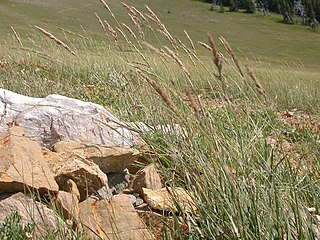
Calamagrostis purpurascens, is a perennial grass commonly known as purple reedgrass, purple pinegrass, or alpine reedgrass It grows 30 to 80 centimetres (31 in) tall.

Lake Walter E. Long is a power plant cooling reservoir on Decker Creek in Austin, Texas. The reservoir was officially impounded in 1967 and serves to provide water for turbines used in the production of electricity from petroleum-based fuels. The dam and the lake are managed by the City of Austin. Surrounding Lake Walter E. Long is the city of Austin's Lake Walter E. Long Metropolitan Park, a popular recreational destination.
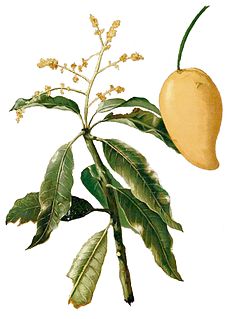
Mangifera sylvatica, also known as the Himalayan mango, pickling mango, or Nepal mango, is a species of plant in the family Anacardiaceae. It is found in Bangladesh, Cambodia, China (Yunnan), India, Myanmar, Nepal, Bhutan and Thailand. It is a tree 6–20 m (20–66 ft) tall. The fruit measure 6 cm–8 cm × 4 cm–5 cm.

Swallenia is a rare genus of plants in the grass family, found only in Death Valley National Park, California.
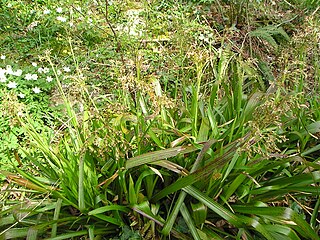
Luzula sylvatica, commonly known as greater wood-rush or great wood-rush, is a perennial flowering plant in the rush family Juncaceae.

Calanthe sylvatica is a species of orchid. It is native to tropical and southern Africa from Sierra Leone to Tanzania to South Africa, as well as Madagascar, Comoros, Mauritius and Réunion.

Zeugites is a genus of North American plants in the grass family. Its species are native to the Caribbean, Mexico, Central America, and/or South America.

Allolepis is a genus of North American plants in the grass family.

Distichlis is a genus of American and Australian plants in the grass family.

Omalotheca sylvatica, also called woodland arctic cudweed, is a species of plant from family Asteraceae found in Eastern United States and British Columbia, on the lawns, roads, and in the forests. For the plant to grow, the roads shall not be in shade, and lowly grassed.

Carex sylvatica is a species of sedge found in deciduous woodlands across Europe. It typically reaches 60 cm (24 in) tall, and has an inflorescence made up of 3–5 pendent female spikes and a single male spike. It is also used as a garden plant, and has been introduced to North America and New Zealand.
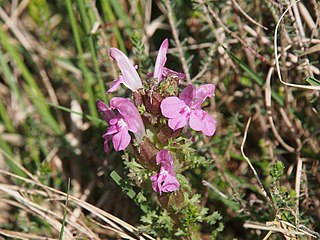
Pedicularis sylvatica, commonly known as common lousewort, is a plant species in the genus Pedicularis. It is native to central and northern Europe where it grows on moist acidic soils, moorland, grassy heathland and the drier parts of marshes.
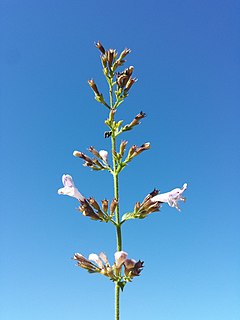
Clinopodium menthifolium, commonly known as the wood calamint or woodland calamint, is a species of flowering plant in the mint family, Lamiaceae. It is found throughout southern and central Europe from the United Kingdom and east as far as temperate parts of Asia, and as south as North Africa. It grows up to 1,700 m (5,600 ft) in elevation.